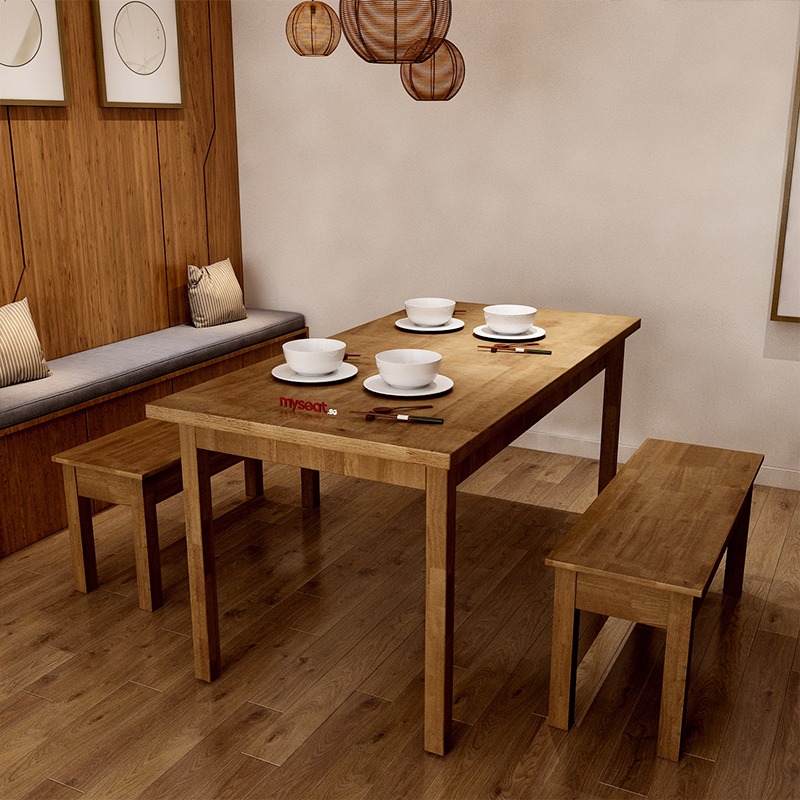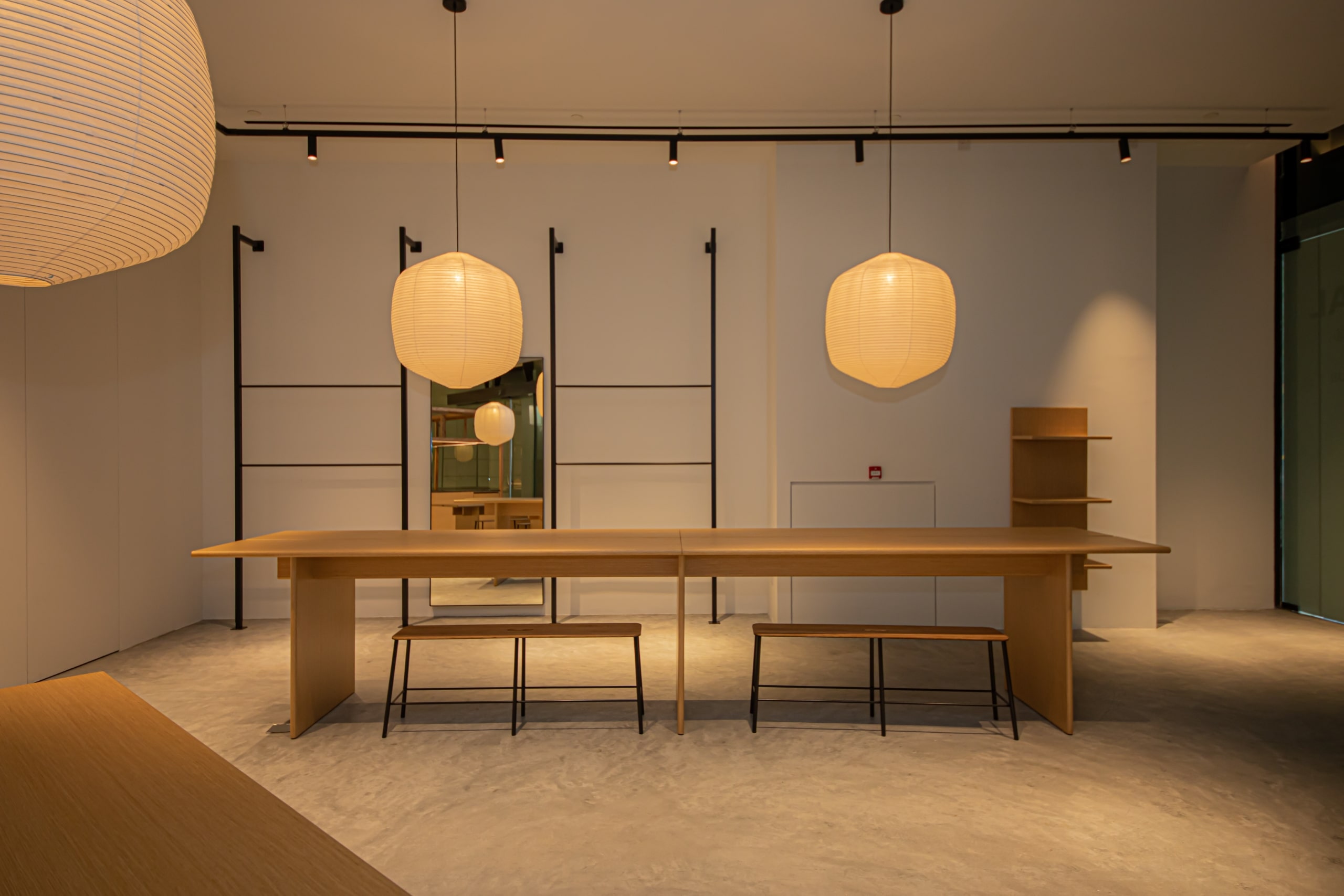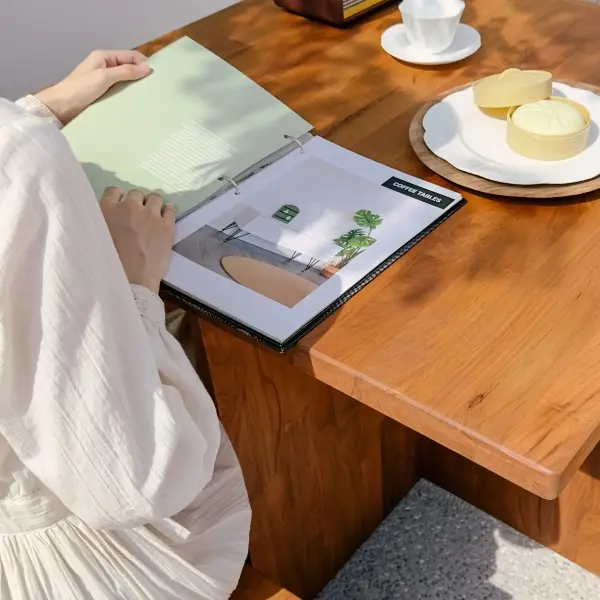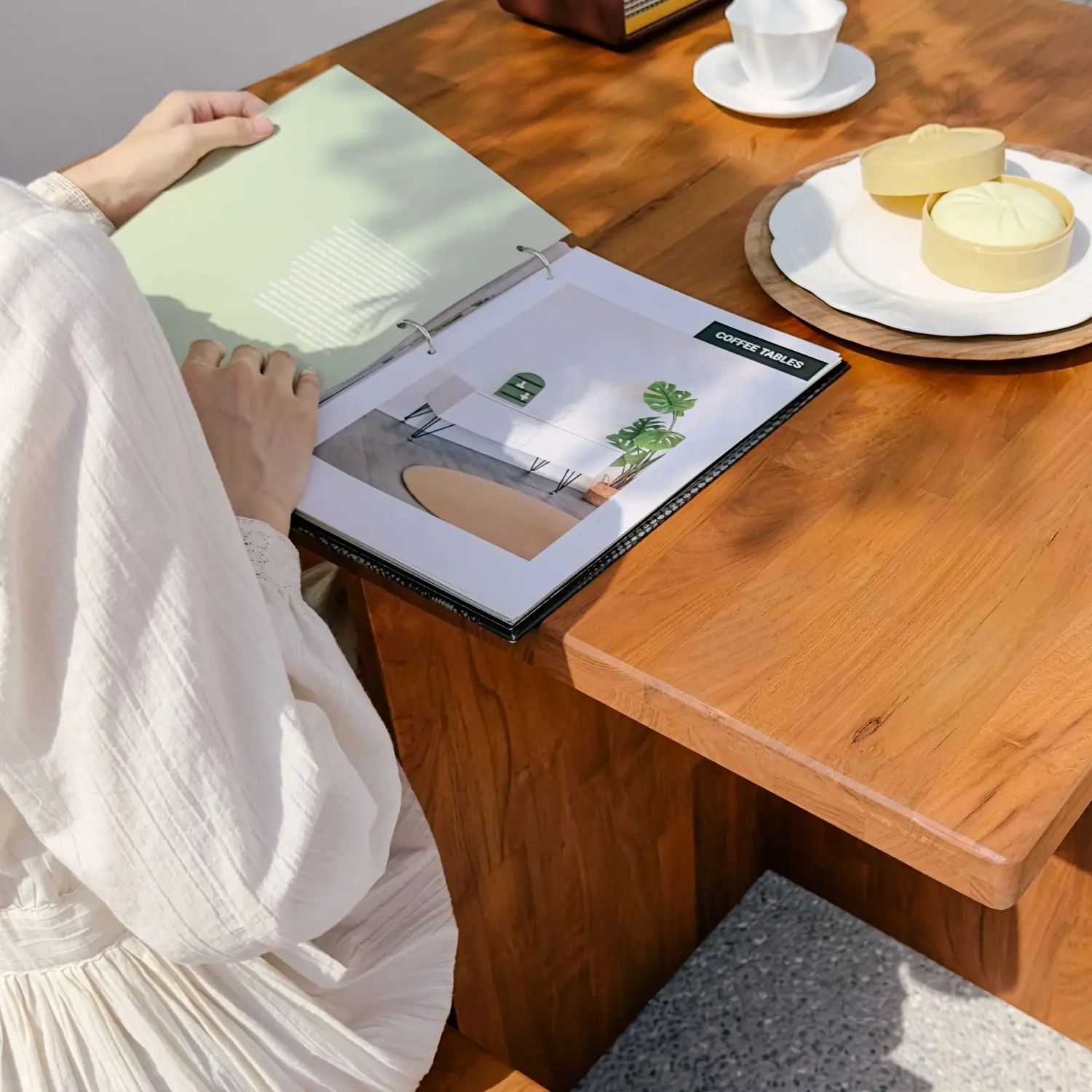Chinese Wooden Architecture: The Revolution of Wood Furniture.
The wooden architecture was the focal point in traditional Chinese buildings. Wood was favoured for most traditional architecture, from the halls of the Forbidden City to typical houses. But why? And how was the wood used?
The use of uncarved wood and bamboo and the use of heavy coating are well known Chinese fashions. It is worth mentioning that Chinese furniture differs significantly from one dynasty to the next, and all Chinese furniture was made of wood. The popular types of wood were ebony, teak, rosewood for heavier furniture like chairs, tables and benches; bamboo, pine and larch for lighter furniture such as stools and small chairs.

The ancient people in China created the first piece of furniture for people to sit on: the floor mat. Various prototypes of wooden furniture were developed around the sitting mat, such as short-legged wooden desks for the lap, chopping boards with legs, and short tables.
Some classic forms of Chinese furniture formed as early as the Eastern Zhou period (770B.C. – 221B.C.). Often referred to in the West as “altar tables”, the Chinese developed long, narrow tables to hold musical instruments or display items of wealth and beauty such as jade, porcelain or flower arrangements.
Now widely regarded as Chinese, furniture began appearing in the Tang Dynasty (618-907 AD). Furniture height began to rise along with the power and status of the Chinese elite. (In English, we speak of being “elevated to a position”.) The furniture architects of the Tang Dynasty began using high round and yoke back chairs for the wealthy nobility.
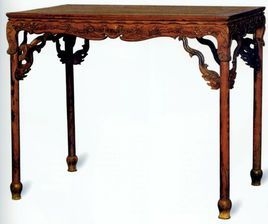
The Classical style of Chinese furniture began in the Northern and Southern Song (960–1279) dynasty. Mid-level seating became ordinary. New furniture forms were invented, such as bookcases, cabinets, stools, and tables. Recent technical evolutions in woodworking began with mid-level furniture. More contemporary and more complex structures appeared, such as rounded backs that were moulded to the body; though, at first, only used by official and higher class Chinese, such furniture pieces eventually spread to the homes of all who could afford them. Even among the peasants, long-legged beds, tables, towel racks, chairs, and stools became trendy. But mat level sitting has never been forgotten.
In China today, both formal living and mat level forms are still in use.
Chinese furniture began to develop some of its distinctive characteristics, such as the use of meditation chairs which are large enough to sit cross-legged in. Besides that, the tall yoke chairs where the feet are to rest on a bottom stretcher, the invention of day beds, opium beds where one can sit cross-legged and use small tables to eat from or write on while sitting on a mat or platform. They also began using thick lacquer finishing for furniture, exotic hardwoods, detailed engravings and paintings for ceremonial purposes and artistic expression.
Perfect Blend of Handwork and Wood
In ancient China, hierarchies were rigid, and superiors and inferiors were prominent. Chinese-style wooden furniture has been deeply influenced by feudal culture and reflects everyday life.
Chinese furniture reached its peak in the Ming and Qing dynasties. Therefore, traditional Chinese furniture is divided into Ming-style furniture and Qing-style furniture. The distinction between the two is mainly based on the work’s style, form, and craftsmanship.
Hardwoods such as rosewood and padauk were used. These woods are hard, corrosion-resistant, have distinct textures, and are beautiful and durable. These raw materials are now rare and costly, and ordinary people often use wood such as pine, elm, and beech, but the quality between the woods differs significantly.

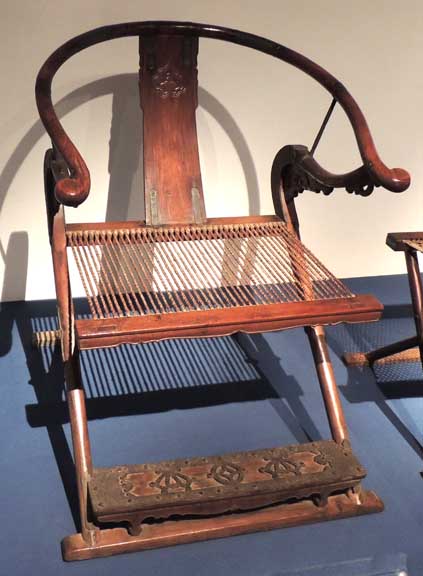
The designers of Ming-style furniture are primarily scholars. Manufactured by excellent woodworking, it is full of cultural ambience. Designers often blend their creative ideas into the design, making it appealing, dignified, and straightforward. In 2006, the manufacturing techniques of Ming-style furniture were included in the first batch of the national intangible cultural heritage list.
Chinese furniture also implies ancient Chinese philosophies. For example, Daoism emphasizes the equilibrium between yin and yang. In the tenon-and-mortise connection, the tenon is yang, and mortise is yin; the two are integrated and complementary. Therefore, the entire device, irrespective of size, does not need a nail or a drop of glue, but it can still be firm for centuries regardless of temperature and climate changes. Confucianism, which emphasizes gentleness and moderation, has also been embodied in traditional Chinese furniture. Therefore, irrespective of style or layout, Chinese furniture is mostly symmetrical.
Luxurious Guangzhou-style furniture
Guangzhou is rich in wood for furniture in southern China, a traditional high-end furniture production area during the late Ming and early Qing dynasties. After becoming a trading port, the influx of Western culture attracted a lot of Baroque, Rococo, and architectural styles. The furniture production has gradually transformed from the fresh and straightforward of the Ming Dynasty to a splendid luxury. Most of the materials used in Guangzhou-style furniture are precious hardwoods distinguished by bulky materials and steady modelling. For example, the main components of the furniture, such as the legs and pillars, no matter how significant the bending is, generally do not use splicing methods. Instead, they are made out of one single timber. The entire piece of furniture also uses the same kind of wood, and it is not doped with other wood.

Magnificent Beijing-style Furniture
The so-called Beijing-style furniture mainly refers to furniture used by the royal court, which was produced in Beijing. The manufacturing skills of this style were born in the imperial city, which is one of the three primary schools of classical Chinese furniture.
Beijing-style furniture was born in the Qing Dynasty and used padauk, rosewood, and other precious hardwood materials. Before making a piece of furniture, the Imperial Workshop made a sample presentation, which could be produced after the emperor’s approval. Therefore, one of the characteristics of Beijing-style furniture is the “royal style.” The furniture specifications were more extravagant than the Ming style, the material also was bold, and the carving was more stable, luxurious, and beautiful.
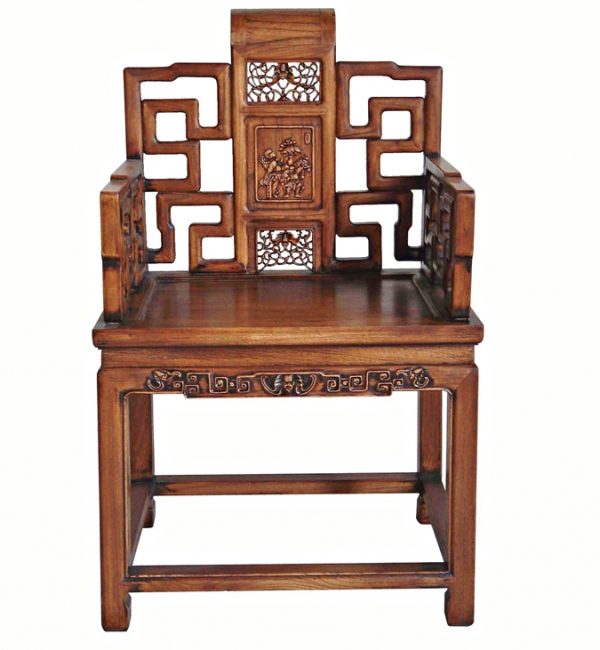
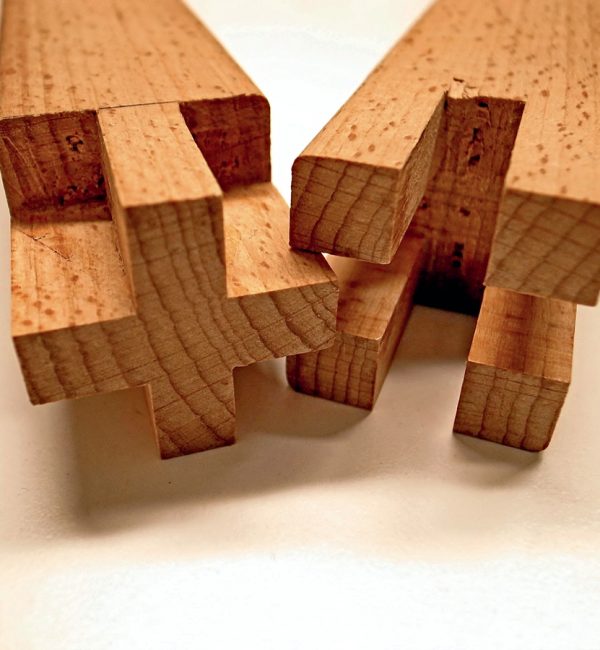
However, the excessive pursuit of luxury and decoration has reduced the furniture’s practicality. This is the biggest regret of the Beijing-style wooden furniture. The Beijing-style furniture manufacturing technique reached its peak during the Kangxi and Qianlong reigns of the Qing Dynasty and declined after the late Qing Dynasty. Nowadays, modern Beijing-style furniture has become an undisputed boutique. In 2008, Beijing-style hardwood furniture production techniques were added to the national intangible cultural heritage list.

A long history of wooden furniture.
CHINA has nearly 5,000 years of recorded history. However, the history of Chinese furniture is even longer than that of its writing, which can be traced back to the Hemudu Culture more than 7,000 years ago, and it reached its peak in the Ming (1368-1644) and Qing (1644-1911) dynasties.
Its artistic charm is enduring thanks to its sophisticated production process, elegant and straightforward style, graceful sculpting, precise and exquisite mortise-and-tenon structure, and smooth lines. It is still loved by people today.
Here are the four main reasons why wooden furniture prevailed in China up until the modern era.
1) Wood was an abundant resource in early China.
The first reason the Chinese prefer wooden furniture is tied up with the abundance of forests in Chinese civilization’s birthplaces — the Yellow River and Yangtze River valleys.
Archaeological evidence of wooden stilt houses in these areas dates as far back as 7,000 years ago (the Hemudu Culture).

2) Ancient Chinese philosophy states that wood is lucky.
Wood remained the most famous structure material even after quarrying and brickmaking developed due to the Five Elements Theory used in Fengshui (geomancy), which has impacted many aspects of life since the Spring and Autumn Period (770–476 BC).
As wood is the element that symbolizes spring and life, it has the best auspicious meanings for buildings. So Fengshui believers have felt driven to build their houses etc., out of wood.
3) Wood was easy to construct.
With a relatively short growing period for most trees used, demand did not outstrip supply as China’s population grew. Wood remained the ideal construction material: easy to obtain, process, and replenish.
Some dynasties decreed that each family should plant some trees to ensure the ready supply of China’s construction material of choice.

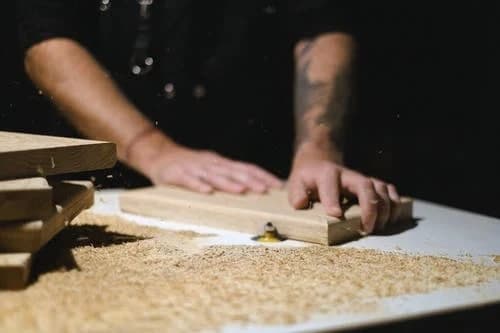
4) Wood was easy to work with.
Traditional Chinese wooden architecture became more complicated and ornate in the imperial era (221 BC – 1912 AD).
As Chinese culture evolved, its architecture became more detailed and decorated. Coupled with massive population growth, more people wanted more, and only wood could keep up with demands.
The good workability of wood made traditional Chinese architecture’s building speed much faster than other civilizations’ stone and mortar structures. Decorations were also easier to form.
In Conclusion
Everything has a history. That table: it has a history. That chair: tons of it. Your desk: you don’t even want to know.
Wooden furniture is so commonplace today that it’s easy to forget that every piece is part of an ancient progression of technology, art, and fashion that spans human history. Furniture has been made in many ways and styles, but few things have defined it as consistently as solid wood. As a material, wood is generally available, soft enough to quickly work with, light enough to move, and sturdy to last. As a result, wooden furnishings have played a significant role not in China’s history but also in human history.
Check out Myseat.sg‘s wide variety of Solid Wood Furniture today for the modern minimalist, Scandinavian designs and fully customizable furniture.



